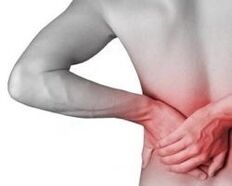
Prostatitis is an inflammatory process that develops in the prostate. Theoretically, all men are at risk for their development, regardless of age.
But men are most susceptible to diseases that are affected by the following factors:
- Sedentary lifestyle;
- Prolonged sexual abstinence or, conversely, an overly active sex life;
- Frequent constipation. Please note that only regular stool disorders can cause prostatitis and not episodic constipation;
- Hypothermia. To get prostatitis, it is not necessary to swim in ice water for hours, just sit on a cold stone, or stay in the cold for a long time in unsuitable clothing;
- Chronic inflammatory diseases (such as chronic bronchitis) or untreated focus of infection of the body (caries, tonsillitis)
- Chronic and acute urological or previous sexually transmitted diseases (urethritis, gonorrhea);
- Sitting work. First, these are those who are forced to sit in the workplace all the time, without the possibility of getting up and warming up (drivers, computer operators);
- Any condition that can suppress the body’s immune system. These include inadequate or inadequate nutrition, physical and emotional overload, persistent sleep deprivation, chronic stress).
All of the above factors become especially dangerous when a man is over 50 years old. At this age, the hormonal background actually changes, immunity decreases, various diseases appear, and in addition, few men in this age lead an active lifestyle. For these reasons, all men over the age of 50 should see a urologist prophylactically every six months.
How does the disease start?
As a general rule, the first sign of prostatitis is an uncomfortable or even painful feeling when urinating. Sometimes you have to get up several times a night to go to the toilet. Few seek medical attention at this stage in the development of the disease, although at this stage, treatment will be short-lived and effective.
After a while, sharp cutting, pulling, or shooting pains appear in the pubic or perineum, sometimes the pain radiates to the penis or anus. Urination will be frequent and painful and the urine will become much more turbid. Pain may occur during bowel movements.
Furthermore, body temperature can rise, sometimes men notice the release of drops of clear white fluid from the urethra. As a general rule, most men seek medical attention during this period of illness.
What happens if prostatitis is not treated?
If you do not see a doctor after the above symptoms and do not start treatment, the disease will continue to progress. The temperature can rise to 40 degrees, the pain becomes very severe, urination becomes very painful, the outflow of urine causes disturbance (it flows out of the urethra in a thin stream or dropwise). The longer prostate inflammation is treated, the greater the likelihood of acute urinary retention and acute renal failure. Timely examination is also needed as symptoms similar to prostatitis also occur in cystitis and prostate cancer.
Diagnostics
After contacting a urologist, an examination of the prostate through the rectum is performed, as well as the secretion of the prostate gland. This procedure is not very pleasant and is sometimes painful, especially in the later stages of the disease. Sometimes this is why men do not want to see a doctor.
But in fact, the sooner you go for an examination, the less painful it is. In addition, the palpation of the prostate itself is a treatment as it helps to eliminate congestion.
In the laboratory, glandular secretions are plated on medium, the sensitivity of the microflora to antibiotics is determined, and urine analysis is performed. An ultrasound is also performed to confirm the diagnosis. Most often, treating prostatitis is not difficult for a urologist when treated in time.
The early stages of prostatitis are treated at home. The patient is prescribed antibacterial medications, baths, compresses, and other thermal procedures on the perineum, as well as painkillers and prostate massage. The treatment is carried out for about 10 days. Spicy foods and alcohol should not be eaten during treatment.
Signs and treatment of chronic prostatitis
In chronic prostatitis, painful pain occurs in the perineum, which subsides after walking or light exercise, and a burning sensation is experienced when urinating. One often does not sleep well and becomes irritable.
If left untreated, chronic prostatitis can cause pelvic inflammatory disease and even infertility. Reflexology and prostate massage are also complemented by the above treatment. The patient is advised to lead a more active lifestyle, to exclude spicy foods and alcohol from the diet.
Trust the doctors
You should not try to diagnose yourself without seeing a doctor. After all, only a urologist can choose the optimal treatment regimen for you, based on the results of the test.
When taking self-medication, you are taking antibiotics "blindly. " This can lead to the disease progressing to a chronic form. If the disease progresses, you may need hospital treatment. In hospital, therapy lasts for 1-2 weeks, and maybe even longer.
To prevent complications, a urologist should check it every six months.
Prophylaxis
Prevention of prostatitis can be traced back to the following recommendations:
- If you will be outside in the cold for a long time, choose the right clothes;
- Eat regularly and completely;
- Take an active lifestyle, play sports;
- Use laxatives for constipation;
- Have a regular sex life, preferably with a regular partner.
A lot of men suffer from prostatitis. This article provides basic information about the disease and explains why you need to see a urologist regularly.



























